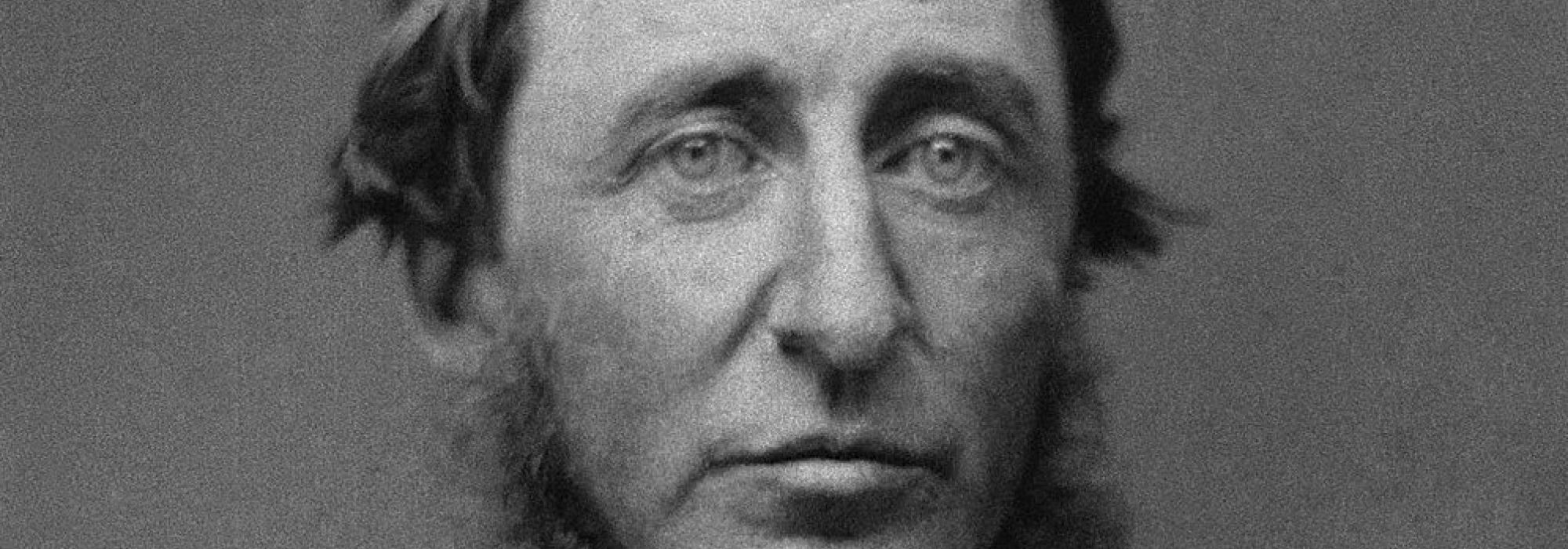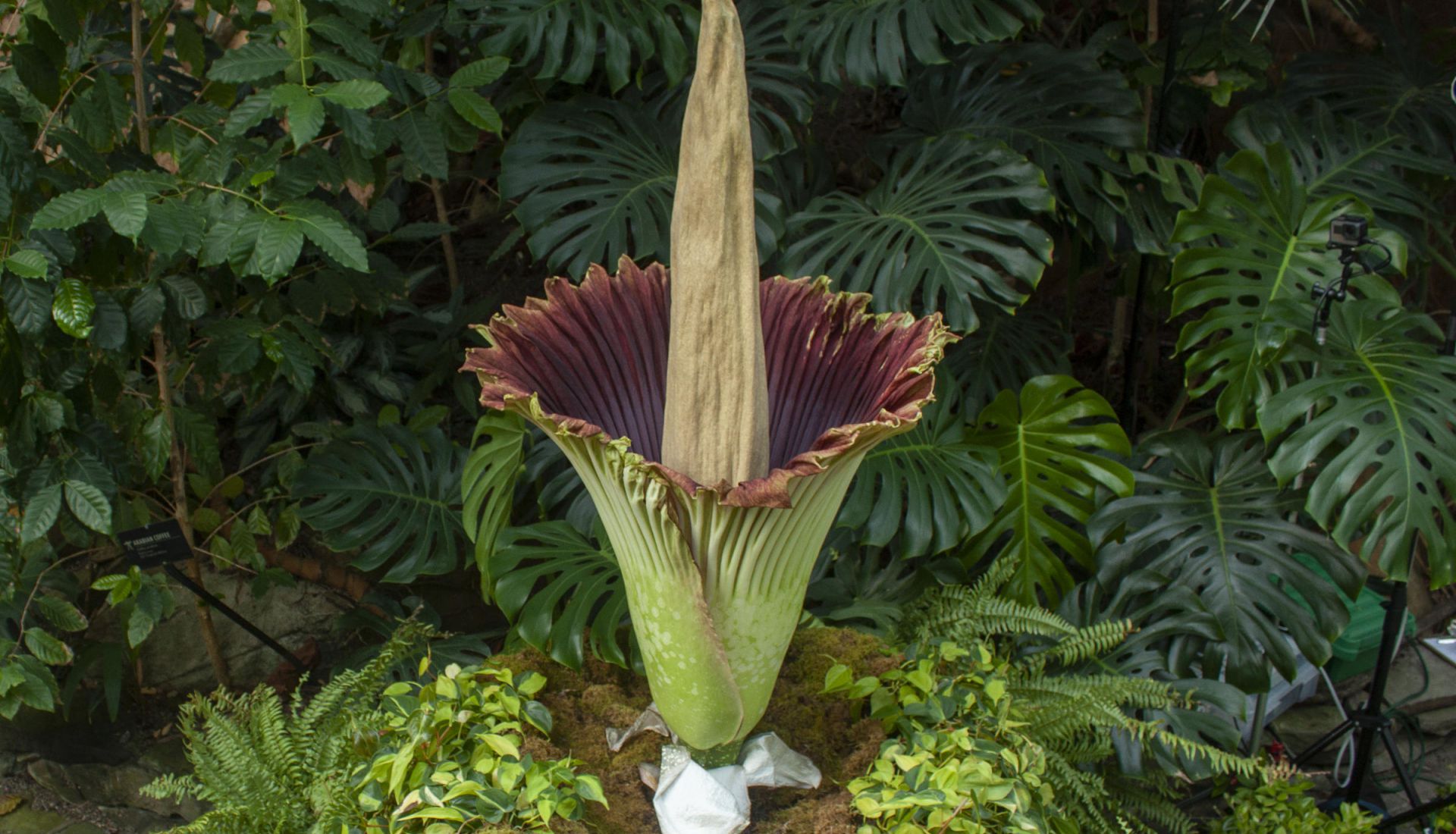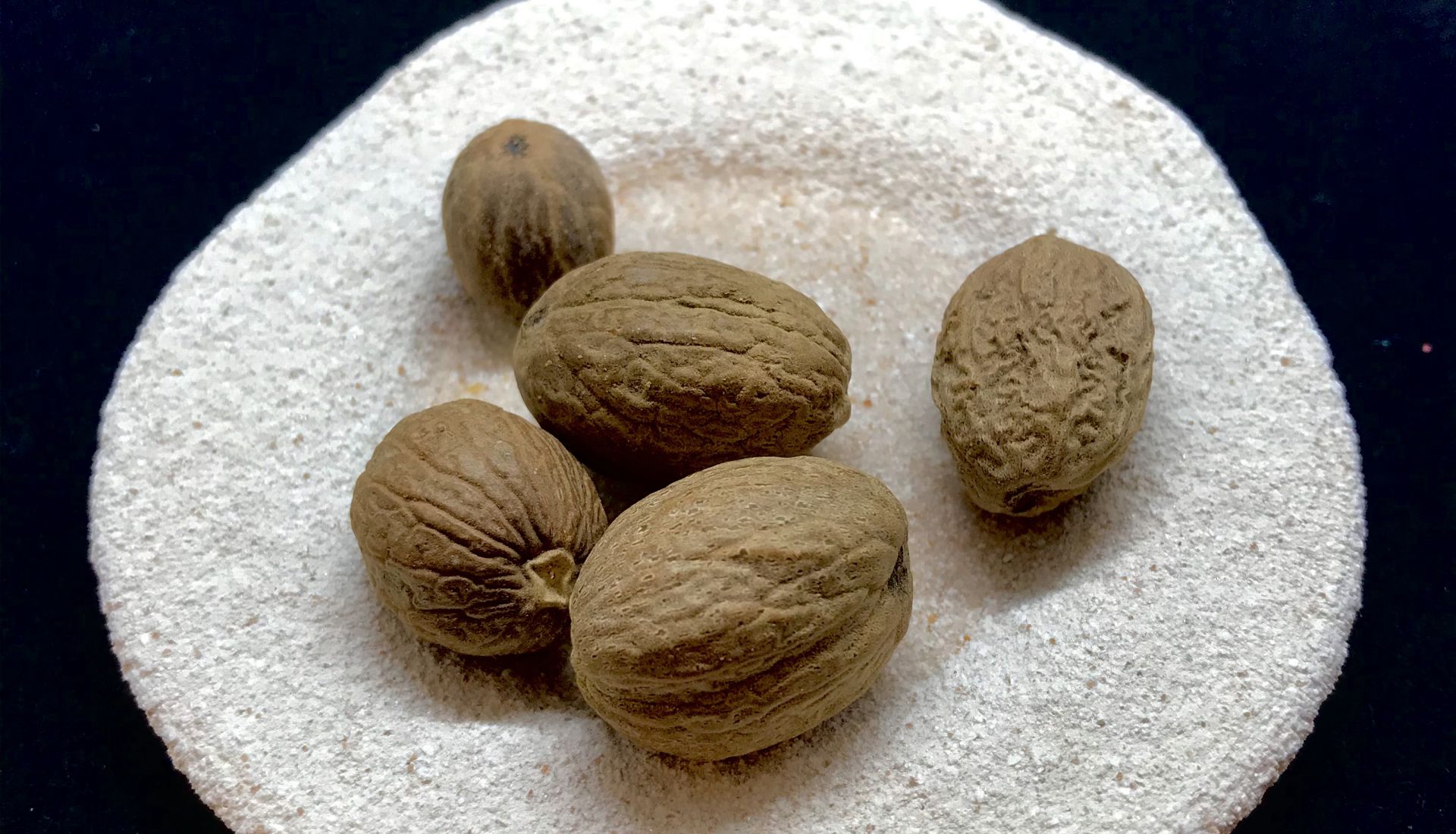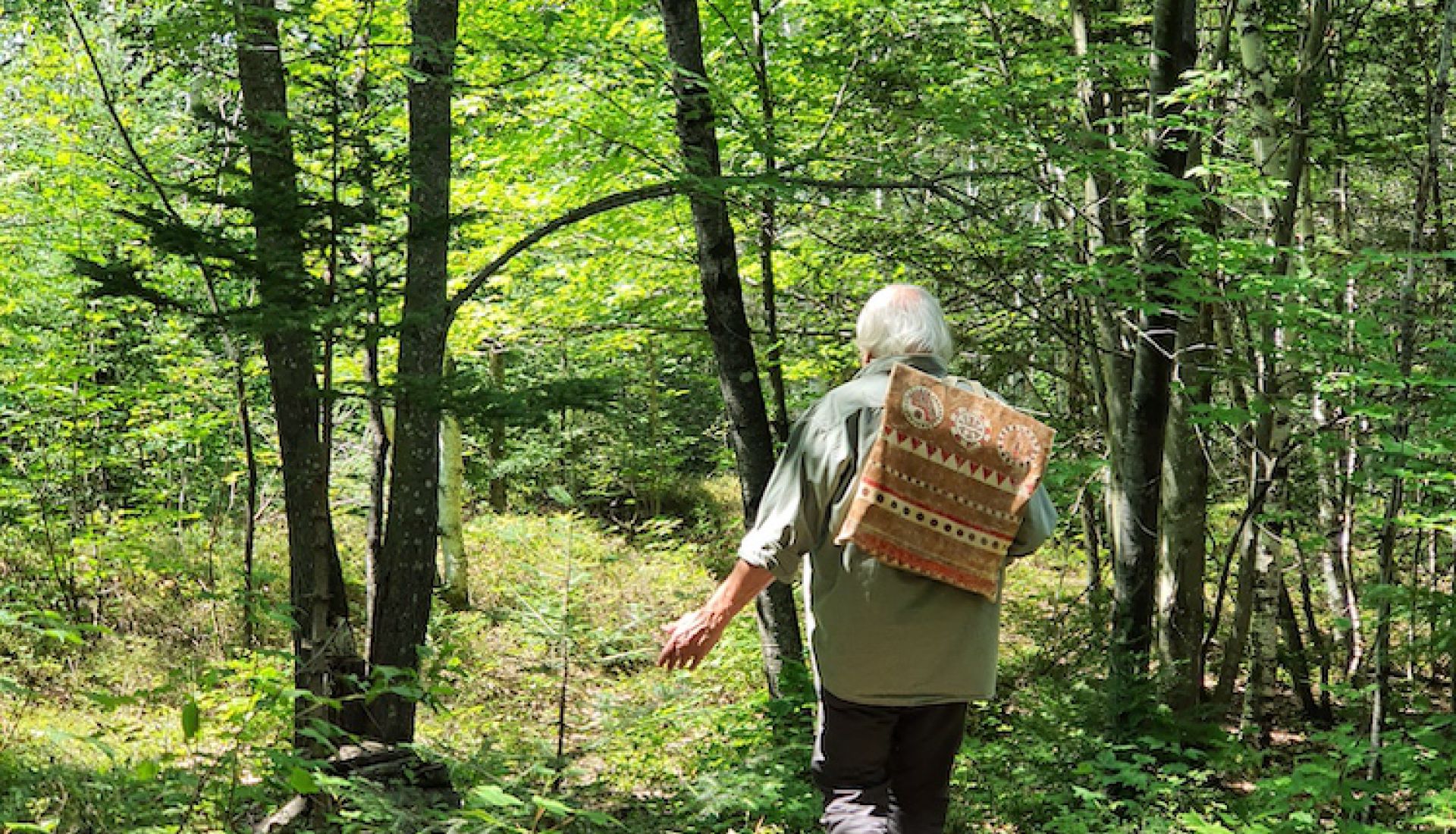The Script for "Whole-Body Sensing" (coming soon in audio)
Note: please read this essay in the same mirthful and experimental spirit as the (Borgesian) spirit in
which it was written, while attending to its deeper methodological and occasional ethical implications.
Introduction
[Long range view: David Howes - hereafter JDH - seated in his backyard] (Figure 9)
Hello. Welcome! So glad you could come. Let me just finish with this baby cedar tree (Figure 1). It is going to be planted tomorrow, so I am giving it a pep talk. Why don’t you take a hike. There is a trail just over there. We call it “the stairway to heaven.” (Figure 2) Go ahead.
[Videographer ascends the trail]
[JDH holds baby cedar on his lap and gazes over neighbour's backyard] (Figure 3)
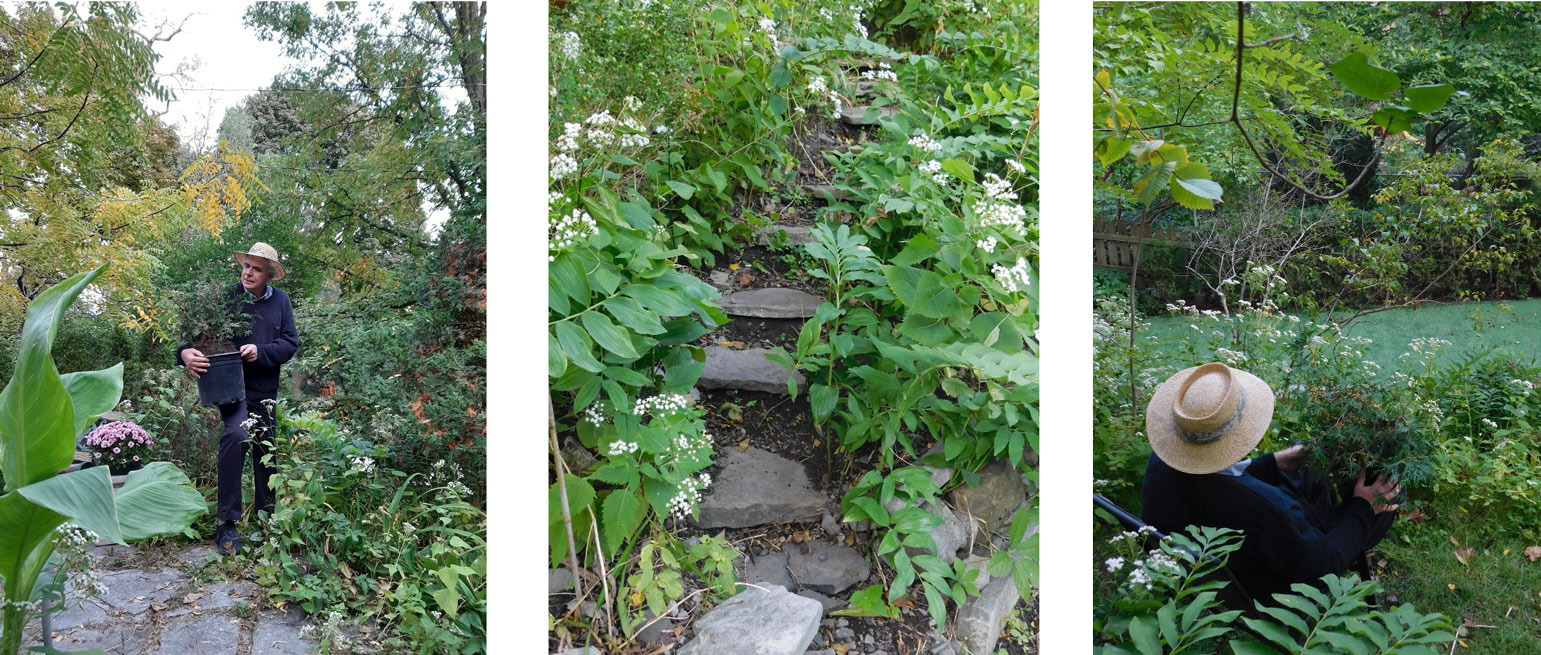
Figure 1: JDH and baby cedar tree
Figure 2: “Stairway to Heaven”
Figure 3: JDH and baby cedar gazing on neighbour’s grass
How is the air up there? Good, eh?
Look over there. See the grass?
You know what they say about how the grass is always greener on the other side of the fence?
Its true! Come, let me explain.
[Videographer descends the trail]
Our neighbours were not satisfied with their lawn. So they put down astroturf. It is always green. Always. Isn’t it nice? No bare patches. There is a downside, though. You see, astroturf attracts football players – or the shades of football players anyway, when it is not in a stadium. They come out at night, around 1:00 or 2:00 a.m., all suited up in their equipment, but then take off their cleats and wriggle their toes in the artificial turf. I can see them from the upstairs window: Ben Cahoon, Peter dalla Riva, Wally Buono, Mike Pringle - all of the past greats of the Montreal Allouettes NFL football team. It can get crowded. They say it is their “Field of Dreams.” I don’t know where they get that idea from.
I have been reading this book, Essays (Figure 4) by the great U.S.-American Naturalist, Henry David Thoreau. I wanted to read it in preparation for a project on “Sensing the Forest” that Gisèle Trudel is piloting. I am looking forward very much to participating in this project in my capacity as a sensory anthropologist. It is a challenge, though, because anthropologists normally study people, not trees. How do you do a sensory ethnography of a forest? {1} I figure Thoreau can help.
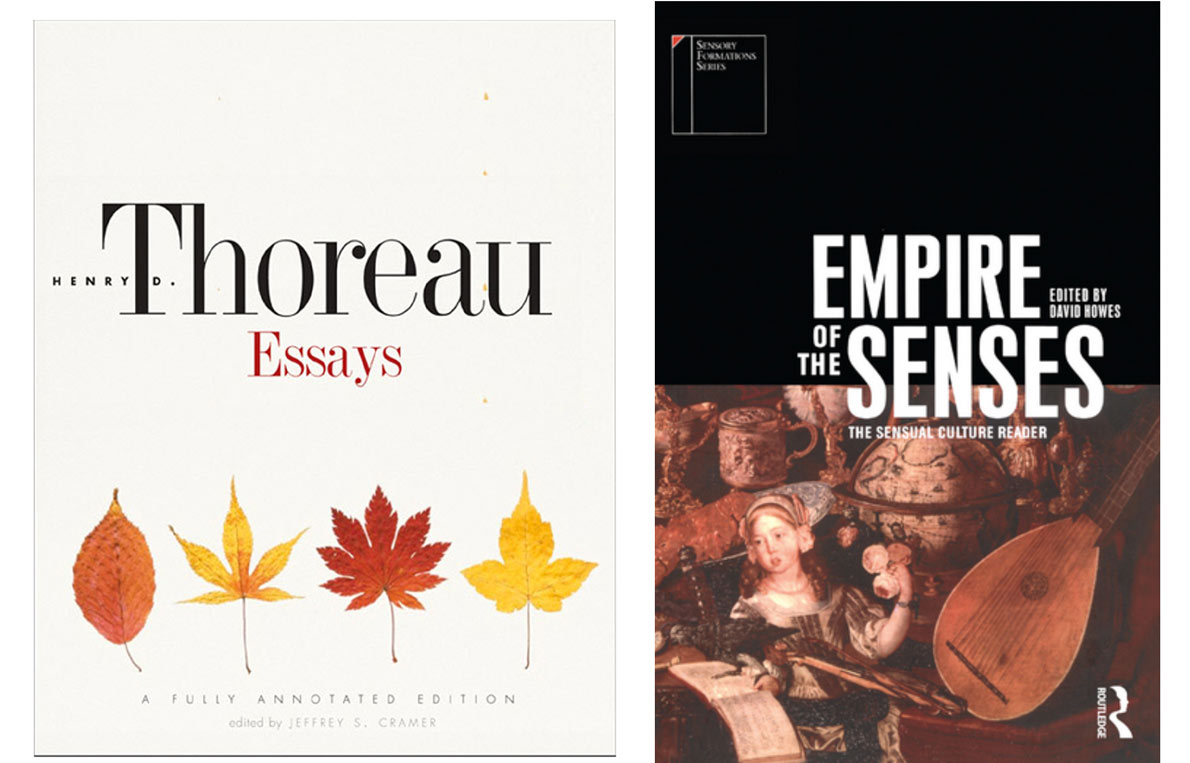
Figure 4: HDT, Essays
Figure 5: JDH, Empire of the Senses
Henry David Thoreau (b. 1817 - d. 1862) is typically remembered as an ascetic and a recluse, on account of all the time he spent living on his own in a cabin at Walden Pond, near Concord, Massachusetts. He was an ascetic. He went off meat, for example, and became a vegetarian. But he did so on aesthetic as well as ethical grounds. Indeed, while he may have lived like a monk, with his simple diet (so his senses could remain “unjaded”), he was also an aesthete of the first order. He wrote (and I love this line): “A man should feed his senses with the best that the land affords.” {2}
To my mind, Thoreau’s aesthetic philosophy ranks right up there alongside Baudelaire’s. You know the words of the poet
There are perfumes as cool as the flesh of children,
Sweet as oboes, green as meadows
— And others are corrupt, and rich, triumphant,
…
Perfumes, sounds, and colors correspond
Those lines are from the poem “Correspondences” (Baudelaire, Les fleurs du mal). Such a lovely poem! However, Baudelaire only ever strolled the streets of Paris (he was the paragon of the type known as “the flaneur”); he did not go on forest walks. Furthermore, he had to use hashish to arrive at his crossmodal perceptions. Nothing wrong with that. But you have to admire Thoreau: he accomplished much the same in prose as Baudelaire did in poetry, without using any drugs. He strove to perfect his senses, not derange them. {3}
The other day I was reading a short story by the great Argentinian writer, Jorge Luis Borges, called “Pierre Menard, Author of the Quixote.” You know the story: Pierre Menard, an ordinary Frenchman of the early 20th century, wrote “word for word and line for line” the ninth and thirty-eighth chapter of the first part of Don Quixote, and a fragment of chapter 22. How was this possible? you wonder. I wonder, too. Borges tells us that at first Menard tried to be Miquel de Cervantes by knowing Spanish well, forgetting about the three intervening centuries, etc., but he abandoned that because he thought it more interesting to “go on being Pierre Menard and reach the Quixote through the experiences of Pierre Menard.”
That word “experiences” gives me pause. It is a very capacious word, with lots of leeway (Jay 2005). I hypothesize that Menard was able to channel Cervantes because he secretly imitated Cervantes’ ways of sensing, or “techniques of perception” (Howes 1990). That is what I do too when I conduct a sensory ethnographic study. I cultivate the capacity to “be of two sensoria” – my own and, through “participant sensation,” the sensorium of the culture under study, and then tack back and forth between them. In this way, I arrive at a state where I can be of more than one mind about things – my own and the mentality (or better, sensibility) of the culture studied. I love to expand my sensory horizons, my “experience,” in this way.
An Experiment in the Sensory Ethnography of the More-than-Human:
Toward a Sensuous Forest Science
Might I be able to “channel” Thoreau, I wonder, despite the distance of years? Well, I do have the advantage that we share the same middle name: Henry David Thoreau, John David Howes. This enables me to feel a certain kinship with him, if only eponymously.
But I know what you are thinking: Thoreau lived in nineteenth century New England, you live in twenty-first century Montreal, Québec. Actually, this is Westmount, not Montreal. Westmount City Hall is just down the street; Atwater is about eight blocks that way; Westmount Boulevard is three blocks that way. This is not the New England woods! (Figure 1, 9) But what if I were to emulate Thoreau’s ways of sensing: might that put me in touch with his spirit?
This may sound hopelessly fanciful, or “Borgesian.” But let’s do an experiment. Let me tell you about Thoreau’s techniques of perception, and then, by putting them into practice, let us see if (like Pierre Menard after Cervantes), I can align my senses with his ways of sensing the world and call up some of the lines of his Essays not by reading them (that would be easy), and not from memory, but with my own senses.
For my understanding of Thoreau’s techniques of perception I am relying on (and deeply inspired by) Victor Carl Friesen’s essay entitled “A Tonic of Wildness: Sensuousness in Henry David Thoreau.” You can find it in the book Empire of the Senses: The Sensual Culture Reader (Howes 2005). (Figure 5)
Friesen notes that one of Thoreaus’ visitors at Walden Pond, Ellery Channing, said he practiced an “edible religion.” As he went hiking in the woods, Thoreau would crumple a leaf to smell it, or he would chew on some bark or berries to taste them. Channing said Thoreau had a “reverent” attitude toward the fruits of nature: he communed with nature by partaking of them. Eating became “a sacrament … and ecstatic exercise,” in Thoreau’s words. Of the acidic taste of cranberries, he wrote, it is “a sauce to life that no wealth can buy.” I will not be going quite so far as Thoreau, though, because some plants are poisonous, and are best avoided. Winterberries, for example, look much like cranberries, but when ingested can cause nausea and low blood pressure, leading to cardiac arrest. So I will limit myself to sniffing plants, and you should do so too.
Friesen quotes a passage which gives us insight into Thoreau’s ways of sensing. In it he is describing the moment at the end of the day when the first intimations of moonlight, which comes “shedding the softest imaginable light,” gain prominence as the daylight wanes.
[JDH reads from Friesen’s chapter in Empire of the Senses, where he quotes Thoreau]
What an immeasurable interval there is between the first tinge of moonlight which we detect, lighting with mysterious, silvery, poetic light the western slopes, like a paler grass, and the last wave of sunlight on the eastern slopes. It is wonderful how our senses ever span so vast an interval, how from being aware of one we become aware of the other.
There is a lot going on in this passage. Following Friesen, note how, in the last line, Thoreau writes of the way in which being aware of one phenomenon (waning sunlight) prompts him to become aware of another (waxing moonlight). He appears to be saying that awareness of the one accentuates his awareness of the other. He could also be saying that awareness of the one makes him anticipate the other. It primes him, readies him – his senses are entrained across the interval.
Second, one might think that the phenomenon of changing light is simply a matter of vision. Not so Thoreau. He describes moonlight as “the softest imaginable” light, so it is tactile. Elsewhere, he says he perceives the changes in the ambient light with his ears as well as eyes, for “always the crickets chirp to the moonlight with a different strain.” Hearing the sound of the crickets “whets his sight” as he puts it, sharpening his vision the same way you use a whetstone to sharpen the blade of a knife.{4} This is an example of synesthesis, not synesthesia, but synesthesis. {5}
Thoreau also notes that colours have temperatures, and these provoke different associations in him: reds and oranges are hot, summery, earthy and “speak to our blood”; blue tints tend to be cool, wintry, associated with the sky or water, something to be “reflective” about.
These words “entrainment,” “anticipation,” “accentuation,” “synesthesis” are interesting to contemplate. It is as if Thoreau was more attuned to the intervals between phenomena than the phenomena, the things, themselves. He certainly dos not see “things” the way we normally do. His mode of perception is relational rather than piecemeal. It is also intersensorial,{6} attuned to the way sight borders on touch, for example, or colours evoke temperatures. It is above all feelingful. Indeed, Thoreau writes: “A man has not seen a thing who has not felt it.” His senses are instruments of ecstasy: they go out and mingle with the world (and each other), rather than function as discrete channels, passive receptors (as in the conventional empiricist account of sense perception bequeathed to us by the philosopher John Locke).
Thoreau often experimented with his seeing. He would tilt his head this way and that to see the same phenomenon from different angles. He would stand on tippy-toes (ever so slightly elevating his gaze) to catch the last rays of light on a distant hill. My favourite technique of his was this: he would look above an object (rather than at it) so as to see “with the underpart” of his eye. For example, he found that a field of stubble appears brighter than usual in the light of the setting sun in winter. Imagine that. Vision has an “underside.” Who would have thought! Imagine all that must be missing from our awareness when we limit ourselves to looking at things straight on. {7} But is this just peripheral vision by another name? I don’t think so. I think it is more. Thoreau referred to it as “the sauntering of the eye.”
Thoreau was a musical man. He sometimes played his flute, or sang songs, when out walking in the wood. Thoreau heard the music of nature everywhere, even from manmade things like the telegraph line. He refers to the wires humming in the wind as his “telegraph harp.” Sometimes he applies his ear to the telegraph post and listens to the hum “within the entrails of the wood.” “Then it seems as if every pore of the wood is seasoned with music,” observes Friesen. Here, then, is another novel technique: literally putting your ear to things.
Thoreau was a tactile man. He writes: “My body is all sentient. As I go here or there, I am tickled by this or that I come in contact with … I can generally recall – have fresh in my mind – several scratches last received.” He is constantly brushing against things, on purpose. At one point, he refers to the moss-spotted skin of the earth in March as a “great leopard” lying out at length, a fur rug spread out to be reclined on. He was always putting his skin in the game. And even when just looking, he uses his eyes feelingly: Pines, he writes, make “a graceful fringe to the earth.” Or again, an oak leaf is “an island or a pond with rounded bays and pointed capes, and he becomes a mariner at sight of it” (Friesen).
Us urban dwellers rarely enter into such intimate contact with our surroundings. Try lying down on a sidewalk. Be careful, though, you may get ticketed for vagrancy (better to sit on a bench.) Only homeless people do that (lay on the ground). The question arises: what do homeless people sense about our urban surroundings that the rest of us, on account of our tactile inhibitions, do not? {8}
As regards water, Thoreau would often wade in a river or immerse himself in a pond in order to get all wet, wet through. Indeed, he would walk a river endwise if he could, to prolong the sensation of being wet and his anticipation of becoming dry. But Thoreau would not towel himself dry afterwards; he lets the sun and wind do that. “The wind to Thoreau is a velvet cushion he likes to lean against,” observes Friesen. By comporting himself in this way, Thoreau renders his body “all sentient.” We should try it (abjuring towels after bathing), but there are laws against going about naked out of doors, so-called public decency laws. The laws enforce the prevailing “sensory regime” of our society (Corbin 1990). Some would consider it a pity that so many sensations are forbidden to us, or distanced due to the intervention of technology. {9}
Climax of the Experiment
Now, to the test. Let me whet my senses.
[JDH crumples leaves, sniffs them; JDH holds a flower to his nose] (Figure 6)
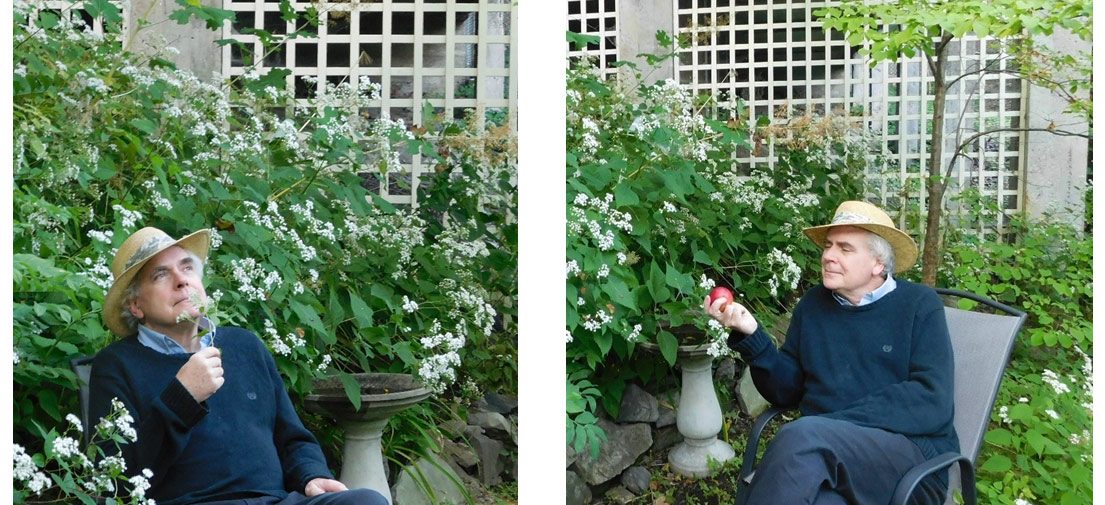
Figure 6: JDH smelling a flower
Figure 7: JDH admiring an apple (Paula Red)
Now, I am going to break the rule I announced at the outset. I am going to taste this apple, but don’t worry, it comes from a trusted local grower in the Eastern Townships. It is a Paula Red, the first apple of the Fall, and my favourite. Forget so called Delicious apples, or Granny Smith apples. Paula Red is the best! (Figure 7) I lived in the Eastern Townships for two years when I was 14 going on 15 in a town called Cowansville. In the Fall, we teenagers would earn pocket money picking apples. There is a technique to picking apples, you know. Don’t pull it or you will bruise it. The trick is to twist it, and it will drop into your hand. I hate it when I see apples in the supermarket with bruises on them. It is not because of the sorting machines crushing them. The machines are comparatively benign. It all has to do with the way they were picked. Picking apples is an art, a lost art.
Let me take a bite. Hmm. How sweet! {10} The word “ovation” comes to mind. It is an “ovation” to taste this apple.
Another bite. Hmm. There is a word picture forming in my head: “Apples are sweet as oboes, green as meadows, crunchy as cucumbers.” No, that’s not it. There seems to be some interference.
Another bite. Let’s see: the label “To be eaten in the wind” comes to mind. That sounds more like Thoreau. But what does he, or what do I, mean by that?
[JDH not reading from HDT’s Essays but rather sensing the lines]
It must be eaten in the fields, when your system is all aglow with exercise, when the frosty weather nips your fingers, the wind rattles the bare boughs or rustles the few remaining leaves, and the jay is heard screaming around.
I get it: A person should “feed their senses,” all of them, with “the best that the land affords.” That is the path to becoming “all sentient.”
Did I get Thoreau’s words right? I’m pretty sure I did. I’ll check later.
Conclusion
Well, my little experiment is complete. You should try it yourself. You too can become a sensory anthropologist, or a sensory naturalist, like Thoreau.
There are ways of sensing the forest, if you are willing to “become sensor” in Natasha Myers’ delightful phrase. (Figure 8) Becoming sensor, you can tap into the more-than-human sensorium. Perhaps this will kindle in you, as it does in Natasha and myself, the notion of an ecology of the senses, and you and I can start cultivating practices that resist the commodification and bureaucratization of the senses that is so prevalent in today’s society (Jones [2006] 2018). We can be “all sentient.” (The world already is.) Forest science stands to be enriched, immeasurably, by our cultivating the ability to be “of two sensoria” – our own and the sensorium of trees.
Fare well. (Figure 9)
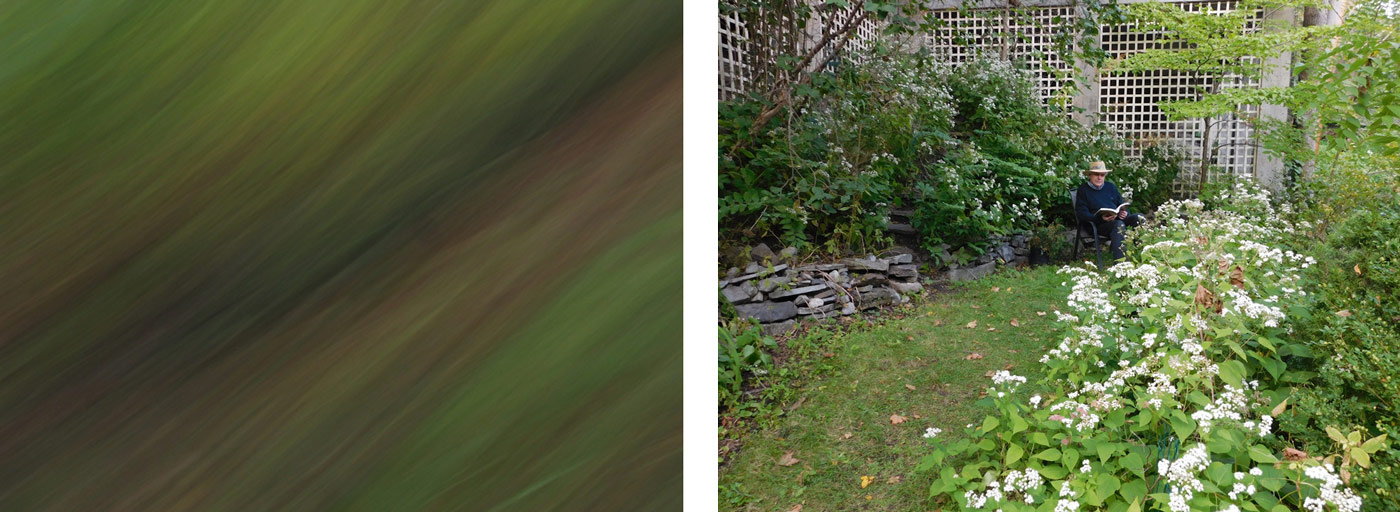
Figure 8: Becoming sensor by Natasha Myers (screenshot)
Figure 9: JDH reading HDT's Essays
Notes
1 One very fine example of what a sensory ethnography of a forest might involve is Eduardo Kohn’s How Forests Think. It is a fascinating book and I commend it highly. However, it is also a little too cognitivist and rooted in semiotics (Peircean semiotics) for my taste. It is to be valued as an account of another “ontology,” but in my work I am more concerned with describing sensologies (Howes and Classen 2014). This is why I suggest that the reader take time out to experience Natasha Myers’ videographic essay “Becoming Sensor” as a companion and counterpoint to reading How Forests Think.
2 This quote and all the ones that follow are from Thoreau’s journals, and can be found in Friesen (2005), unless otherwise indicated. In his introduction to The Illustrated Walden, Bradford Torrey describes Thoreau’s temperament as follows: “A naturalist railing against science; an idealist with all the ‘faculty’ of a whittling Yankee; a free-thinking Puritan; a Stoic who sucked sweetness out of all of his sensations; a paradox from beginning to end: such was the author of ‘Walden’” (Torrey 2016: xv)
3 Thoreau did not do drugs or consume alcohol, but this did not prevent him from being intoxicated, regularly. Of the strains of the wood lark he says: “I would be drunk, drunk, drunk, dead drunk to this world for it forever.” The sounds and sap of nature were his mead. Even the annoying (to us) buzz of mosquitos comes in for praise (to his ear): “A mosquito’s hum affects him like a trumpet; it speaks of the world’s vigor and fertility” (Friesen).
4 Friesen phrases Thoreau’s intersensoriality this way: “Thoreau … speaks of ‘senses’ spanning the interval and elsewhere tells how the non-visual senses ‘serve, and escort, and defend sight.’” See further infra notes 5 and 6.
5 The synesthesis/synesthesia distinction comes from Pentcheva ([2006] 2018). She defines synesthesis as “consonant sensation: the simultaneity of senses” in contrast to synesthesia or “concomitant sensation: the experience of one sense through the stimulation of another, such as color experienced as sound” (Pentcheva 2018).
6 On intersensoriality, or crossmodal correspondences (we use these terms interchangeably), see Classen 1998, Howes 2006, Howes and Classen 2014: ch. 6, and Spence 2018, 2020.
7 So too with listening. The ethnomusicologist Steven Feld (1991) records how the Kaluli people of the Eastern Highlands of Papua New Guinea attune their ears to hear “the inside of a beat” (of a drum). He also relates how, when he played back the sound recordings he made of birdcalls for the Kaluli (so his interlocutors could identify the birds for him), they would positions their headphones slightly off their ears, so they could listen to the recordings in conjunction with the ambient sounds of the forest. This is an example of interaurality.
8 For a highly sensitive and empathic, if at times brutal, ethnography of the sensory world of the homeless see Shelter Blues (Desjarlais 1997): the homeless must contend with random kicks of contempt from passersby (forget random acts of kindness) and try to “balance” their meds in an effort to normalize their perceptions. For an account of community mobilization in league with the homeless, including a discussion of techniques for the reversal of the gaze of authority, and overcoming everyday brutality, see Bouclin 2019.
9 Richard Sennett, for one, extolls the public cult of nudity in Periclean Athens, and regards this epoch as the highpoint of Western civilization. In Flesh and Stone (1994), he also has some interesting things to say about the “tactile sterility” of the modern urban environment, with its towering skyscrapers in the urban centre and row upon row of identical single-family dwelling units in suburbia. According to Sennett, urban sprawl disperses the population – thus increasing interpersonal distance – while the various modern “technologies of motion,” such as cars, elevators, and movie theatres, provide “freedom from resistance” by insulating bodies from their surroundings and whisking them from point to point. This “freedom from resistance” increases passivity, diminishes empathy, and undermines meaningful engagement in public life (the domain of alterity) by dulling touch.
10 You might object: You are not really using your senses. You are simply using your imagination. But I’m fine with that. You see, in premodern times (i.e. prior to Locke) imagination was considered to be one of the “inner” senses, alongside memory and “the common sense” (sensus communis). It was a sensuous faculty, not a cognitive capacity, the way it is pictured in contemporary cognitive science (see Howes 2009). We really need to disabuse ourselves of the prevailing cognitivism, become un-modern, and cultivate “sensitivism” in its place (Ankersmit [2005] 2018). Only in that way can we begin to perceive our environment – urban as well as rural – with the same fresh (and feelingful) eyes as a Thoreau. I am strongly opposed to the “extended mind hypothesis” (Clark 2008): what we need is a theory (and practice) of the extended sensorium (Howes n.d.)
11 In “Sweetness”, Michael Pollan ([2001] 2018: 288) writes: “It wasn’t until late in the nineteenth century that sugar became plentiful and cheap enough to enter the lives of many Americans [by which Pollan means the European colonizers, more accurately labelled USians]; before then the sensation of sweetness in the lives of most people came chiefly from the flesh of fruit. And in America [by which he means the U.S.] that usually meant the apple.” As Pollan goes on to observe, during the (so-called) colonial era and prior:
The experience of sweetness was so special that the word served as a metaphor for a certain kind of perfection. When writers like Jonathan Swift and Matthew Arnold used the expression ‘sweetness and light’ to name their highest ideal … they were drawing on a sense of the word sweetness going back to classical times, a sense that has largely been lost to us. The best land was said to be sweet; so were the most pleasing sounds, the most persuasive talk, the loveliest views, the most refined people, and the choicest part of any whole … Lent by the tongue to all the other sense organs, ‘sweet,’ in the somewhat archaic definition of the Oxford English Dictionary, is that which ‘affords enjoyment or gratifies desire.’ Like a shimmering equal sign, the word sweetness denoted a reality commensurate with human desire. Since then sweetness has lost much of its power and become slightly … well, saccharine (ibid.)
Pollan suggests that we need to recuperate this lost usage of the word “sweet” if we are ever to appreciate the apple’s former power as the embodiment of a sensation bordering on perfection that resonates across and in multiple modalities (see further Corbin 2014)
References
Ankersmit, F. 2005. Huizinga on Historical Experience. In D. Howes (ed.) Senses and Sensation: Critical and Primary Sources. Vol. II. Abingdon: Routledge
Borges, J.L. 1962. Labyrinths: Selected Stories and Other Writings. New York: New Directions
Bouclin, S. 2019. Explouter des techniques cinélégales pour mieux ressentir les effets qu’a la réglementation sur les personnes en situation d’itinérance. Canadian Journal of Law and Society 34(2) : 227-242.
Clark, A. 2008. Supersizing the Mind: Embodiment, Action and Cognitive Extension. Oxford: Oxford University Press.
Classen, C. 1998. The Color of Angels: Cosmology, Gender and the Aesthetic Imagination. London: Routledge.
Corbin, A. 1990. Histoire et anthropologie sensorielle. Anthropologie et Sociétés 14(2) : 13-24.
Corbin, A. 2014. La Douceur de l'ombre : l'arbre, source d'émotions, de l'Antiquité à nos jours. Paris : Flammarion.
Desjarlais, R. 1997. Shelter Blues: Sanity and Selfhood among the Homeless. Philadelphia: University of Pennsylvania Press.
Feld. S. 1991. Sound as a Symbolic System: The Kaluli Drum. In D. Howes (ed). The Varieties of Sensory Experience: A Sourcebook in the Anthropology of the Senses. Toronto: University of Toronto Press.
Friesen, V.C. 2005. A Tonic of Wildness: Sensuousness in Henry David Thoreau. In D. Howes (ed.) Empire of the Senses: The Sensual Culture Reader. Abingdon: Routledge.
Howes, D. 1990. Les techniques des sens. Anthropologie et Sociétés 14(2)
Howes, D. 2009. Introduction: The Revolving Sensorium. In D. Howes (ed.) The Sixth Sense Reader. Abingdon: Routledge
Howes D. 2006. Scent, sound and Synaesthesia: Intersensoriality and Material Culture Theory. In C. Tilley et al. (eds.) Handbook of Material Culture. London: Sage.
Howes, D. 2019. Multisensory Anthropology. Annual Review of Anthropology 48(1)
Howes, D. (forthcoming) “The Sensory Studies Manifesto.” Toronto: University of Toronto Press.
Howes, D. and Classen, C. 2014. Ways of Sensing: Understanding the Senses in Society. London: Routledge.
Jay, M. 2005. Songs of Experience: Modern American and European Variations on a Universal Theme. Berkeley: University of California Press.
Jones, C.A. [2006] 2018. The Mediated Sensorium. In D. Howes (ed.) Senses and Sensation: Critical and Primary Sources, vol. IV. Abingdon: Routledge
Kohn, E. 2013. How Forests Think: Toward an Anthropology Beyond the Human. Berkeley: University of California Press.
Myers, N. nd. Becoming Sensor in Sentient Worlds. https://becomingsensor.com/
Pentcheva, V. [2006] 2018. The Performative Icon. In David Howes (ed.) Senses and Sensation: Critical and Primary Sources. Vol. II. Abingdon: Routledge Thoreau, H.D.
Sennett, R. 1996. Flesh and Stone: The Body and the City in Western Civilization. New York: W.W. Norton.
Spence, C. 2018. Crossmodal Correspondences: A Synopsis. In D. Howes (ed.) Senses and Sensation: Critical and Primary Sources. Vol. III. Abingdon: Routledge
Spence, C. 2020. Senses of Place: Architectural Design for the Multisensory Mind. Cognitive Research: Principles and Implications 5: 46
Thoreau, H.D. 2013. Essays. New Haven: Yale University Press.
Torrey, B. 2016. Introduction. In H.D. Thoreau, The Illustrated Walden. New York: TarcherPerigree.
